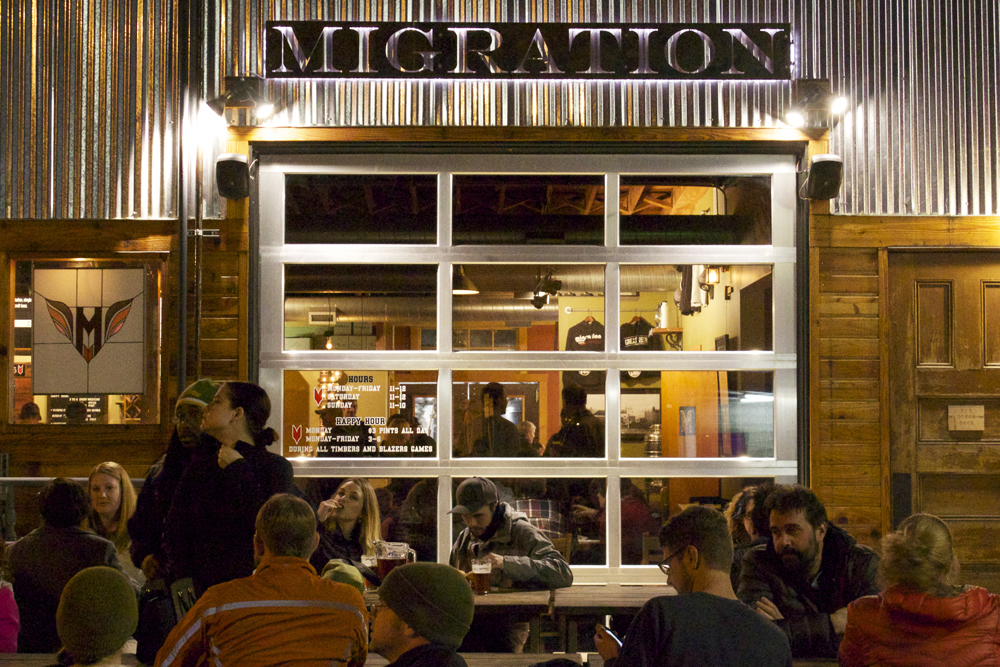Is it minority hunting season?
Two leaders of multicultural student groups at Portland State University reacted with fear recently over the police shooting of James Jahar Perez in North Portland late last month.
The coordinators of the Movimiento Estudiantil Chicano de Aztlan (MEChA) chapter and the Association of African Students said they were concerned that Portland police are likely to judge and execute minority suspects.
On a bright Sunday evening, at 5:07 p.m. March 28, officers Sean Macomber and Jason Sery stopped a 1997 Mitsubishi Diamante at North Fessenden Street and Burr Avenue for a failure to signal 100 feet before a turn, according to Chief Derrick Foxworth’s statement the next day.
The stop escalated to a struggle and Perez was shot three times within 24 seconds. He died at the scene, the fourth victim in a series of springtime police shootings.
Perez joined Kendra James (May 5, 2003), Byron Hammick (Feb. 22, 2002) and Jos퀌� Mej퀌_a Poot (April 1, 2001) as a minority casualty of lethal force by a Portland police officer.
“I have a recurring nightmare,” said Adolfo Garza-Cano, co-coordinator of the MEChA chapter. “What happens to me if a cop thinks I’m a suspect and draws his gun? There are not many things I could say to get him to holster it.”
“I’m scared,” said Suad Jama, coordinator of Association of African Students. “I’m perfectly legal and never in trouble, but if I were stopped, is it OK to reach for my purse to get my ID?”
“That shots were fired within seconds tells me that the officer intended to kill, not control, the suspect,” Jama said. “He was ready to use force without knowledge if he were violent or armed.”
The victims were described after their deaths in various negative ways. Perez as having cocaine in his blood; James as being a neglectful mother; Poot as being disturbed and irrational; and Hammick as pinning his son to a wall, all leaving no alternative but deadly force.
“They say he [Perez] was high on drugs, but if police shot everyone who’s used drugs, half of us would be dead,” Jama said.
Police Bureau procedures appear not to have been followed in the four incidents.
The relevant directive on such incidents is intended to clarify procedure, including that for high-risk traffic stops and for the deadly use of force, eliminating troublesome grey areas open to officer interpretation.
A high-risk traffic stop is performed when the officers know prior to stopping the vehicle that the occupants of the vehicle are wanted for a serious crime or there is information that leads officers to believe they or citizens are at greater risk of danger.
In the training for high-risk traffic stops, the driver of the suspect car should be ordered out of the car at gunpoint and instructed to remove the keys from the vehicle and to hold them in his/her hand. The subject should then be instructed to walk backwards to a point where officers can take physical custody of the person and retrieve the keys to the vehicle.
Over the past four years, community outrage has prompted investigations of the shootings. In each case, the officers’ actions were upheld.
In the Kendra James incident, the 115-pound, 5-foot-2 woman was alone in the back seat of the car, in the middle of the night on a freeway overpass surrounded by six-foot-tall police officers Kenneth Reynolds (#37287), Scott McCollister (#40709) and Rick Bean (#39770). James jumped into the front seat and, according to the police, tried to drive away. She died of gunshot wounds in the car.
Garza-Cano said the victims cannot tell their side of the story.
“It’s the views of the living that get taken down, and they might not be the truth,” he said. “The officer gets the last laugh. Minorities fear authority because we don’t know, ‘Will the officer understand me or fear me?'”
“James’ fear of being taken away from her kids probably led her to panic,” Garza-Cano said. “I probably would have done the same thing. Where in the police manual is the protocol to fire on a driver?”
James’ and Perez’ death at the hands of Portland police reminded Garza-Cano of a similar incident three years ago.
“Jos퀌� Mej퀌_a Poot tried to board a Portland bus, but was 20 cents short. The driver assumed he should know how to ride the bus. The police nearby assumed he spoke Spanish. I think he was Mayan; there are many indigenous languages still in use in Central America.”
“The police interpreted his actions as resistance, and in custody, Spanish interpreters could not communicate with him, so he was considered mentally ill,” Garza-Cano said. “If you’re afraid of authority, you’re probably flipping out and ready to escape. Is a life worth more than 20 cents?
“How many shootings will it take? It looks to me like the beginnings of another civil rights movement,” Garza-Cano said. “What justifies readiness to use force?” he asked. “Weapons of mass destruction are right here in the U.S. being used against our own.”
For links to case files associated with police shootings between 1994 and the present, visit www.portlandcopwatch.org/listofshootings.html For access to official statements and police procedure manuals, visit http://www.portlandonline.com/police.



